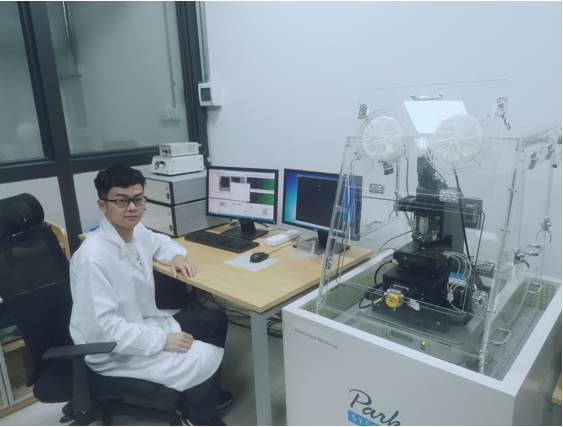
Peng Tan
Peng Tan received his B.S. (2019) in Chemistry from the Hainan Normal University and he is now pursuing a M.S. in Chemistry at Shenzhen University with an expected graduation date of June 2022. During his master in Shenzhen University, Mr. Peng Tan has studied and worked in the wearable flexible device team of Prof. Xuechang Zhou's research group at Shenzhen University, and received several awards, including Academic Scholarship for many times and the 7th China International "Internet+" Contest Guangdong Province Division- Bronze Award of Higher Education Master Circuit. He will continue to further study in Hong Kong Polytechnic University in September 2022. At present, His research focuses on the fabrication and application of self-adhesive conductive polymer composites. He has published 4 research articles in different journals (including Nature Communications, ACS Applied Electronic Materials, Soft Matter, etc.) and granted for 2 invention patents of China.
1. Please summarize the research you do and explain why it is significant.
My current research focuses on the fabrication and application of self-adhesive conductive polymer composites. My research goal is to balance the electrical conductivity and Young's modulus of materials and tackle some key problems, such as poor adhesion strength and significant mechanical mismatch between biological tissue and the flexible material, which possibly cause the function failure of smart devices. Therefore, designing and developing novel self-adhesive conductive materials with outstanding properties is of significant value.
2. How might your research be used?
In my work, a self-adhesive conductive polymer based on supramolecular interactions is designed and developed, which features many advantages, such as high interfacial adhesion, low modulus as well as high electrical conductivity. It is a promising material for bioelectrodes (i.e., for monitoring bioelectric signals of the human body) because it matches the mechanical modulus of skin tissue. The polymer can also be applied in integrated arrays of alternating current electroluminescence devices during muscle training to visualize the muscle’s electrical signals. This means that the development of the self-adhesive conductive polymer may be one possible solution to the problem of significant mechanical mismatch between biological tissue and the flexible material. Furthermore, the composite consists of water-soluble substances, and it can be fabricated into transparent electrodes and various kinds of circuit patterns, which has an advanced prospect in soft electronics.
3. Why is the Park AFM important for your research?
This Park NX10 system is a practical and efficient test tool to characterize the physical properties of self-adhesive conductive polymer composites, and it can also be capable of gaining significant information such as the surface morphology, roughness as well as height of the composite, which can help us evaluate and analyze the influence of the concentration supramolecular solvent on the electrical properties of the polymer material. Hence, the AFM enables to help us better understand and optimize performance of self-adhesive conductive polymer materials, which is significant for my studies.
4. What features of Park AFM are the most beneficial and why?
The true Non-Contact mode of Park NX10 AFM provides us with accurate and reliable topography of target samples without damaging the probe and modifying the sample surface. In addition, the data analysis software XEI matched with Park NX-10 AFM can be applied to collect and analyze the data of physical and structural characterization of self-adhesive conductive polymer composites in nano scale, and evaluate the parameters such as average height, diameter and surface roughness of conductive films.




